Instruction
Understand your wedge data to find the “magic yardage”

Being a good wedge player can really help golfers lower their scores in an instant.
Wedge shots from inside 100 yards from the fairway are a safe zone, the place where golfers lay up on a par 5 or the position they seek when they get in trouble off the tee. The key for golfers is to try and place their third shot as close to their “magic yardage” as they can; thus, they will have a great chance of making a birdie or saving par.
A golfer’s “magic yardage” is the distance inside 100 yards that he or she feel the most comfortable having into the green. It could be 43 yards, 80 yards or 93.5 yards. Golfers will always seek this yardage to the flag on holes where they don’t try and hit the green in two shots for whatever reason. This yardage is different for every person and can be a full swing, a shorter swing or a choked down partial shot. It’s just the one that they feel they can hit close to the pin more often than not.
With that being said, my magic yardage is 80 yards (for me it’s a 54-degree wedge choked down halfway taken up to shoulder high). Personally, I don’t know why this partial swing feels so comforting to me, however, it seems to work. That’s why I don’t lay-up to any other position unless the conditions dictate otherwise.
What I have attached is my Trackman data for a sampling of seven shots I hit last week from 80 yards noting several things:
- My club head speed was between 66 and 68 mph.
- My ball speeds were 67 to 74 mph.
- The launch angles of my shots were between 21 and 28 degrees (because I hit these shots with different trajectories on purpose).
- My carry distances were between 75 to 84 yards.
- The spin of these shots ranged between 5,000 and 10,000 rpm.
So now that you have examined my shots, what can we ascertain from this data?
Using different launch angles, dynamic lofts and trajectories can alter a golfer’s descent angles and affect their spin rates. That makes the ball react differently on the green. Golfers don’t need to hit the same shot every time into the pin from 80 yards, but it is helpful if they want to know how the ball is going to react once it hits the green.
Final Analysis
There is more than one way to hit a shot close to the pin, but the more consistent golfers can be within the parameters of club head speed, attack angle, launch angle, dynamic loft and backspin rates for each shot, the better they will be at controlling the ball once it lands.
Practice on a launch monitor to see what your data trends are from 30 to 100 yards, and you will find your own “magic yardage.” From there, you can hit a multitude of shots trying to better control the factors listed above in order to truly master your wedge game for good!
- LIKE4
- LEGIT1
- WOW0
- LOL0
- IDHT0
- FLOP0
- OB0
- SHANK1
Instruction
Clement: Laid-off or perfect fade? Across-the-line or perfect draw?

Some call the image on the left laid off, but if you are hitting a fade, this could be a perfect backswing for it! Same for across the line for a draw! Stop racking your brain with perceived mistakes and simply match backswing to shot shape!
- LIKE0
- LEGIT0
- WOW0
- LOL0
- IDHT0
- FLOP0
- OB0
- SHANK1
Instruction
The Wedge Guy: The easiest-to-learn golf basic

My golf learning began with this simple fact – if you don’t have a fundamentally sound hold on the golf club, it is practically impossible for your body to execute a fundamentally sound golf swing. I’m still a big believer that the golf swing is much easier to execute if you begin with the proper hold on the club.
As you might imagine, I come into contact with hundreds of golfers of all skill levels. And it is very rare to see a good player with a bad hold on the golf club. There are some exceptions, for sure, but they are very few and very far between, and they typically have beat so many balls with their poor grip that they’ve found a way to work around it.
The reality of biophysics is that the body moves only in certain ways – and the particulars of the way you hold the golf club can totally prevent a sound swing motion that allows the club to release properly through the impact zone. The wonderful thing is that anyone can learn how to put a fundamentally sound hold on the golf club, and you can practice it anywhere your hands are not otherwise engaged, like watching TV or just sitting and relaxing.
Whether you prefer an overlap, interlock or full-finger (not baseball!) grip on the club, the same fundamentals apply. Here are the major grip faults I see most often, in the order of the frequency:
Mis-aligned hands
By this I mean that the palms of the two hands are not parallel to each other. Too many golfers have a weak left hand and strong right, or vice versa. The easiest way to learn how to hold the club with your palms aligned properly is to grip a plain wooden ruler or yardstick. It forces the hands to align properly and shows you how that feels. If you grip and re-grip a yardstick several times, then grip a club, you’ll see that the learning curve is almost immediate.
The position of the grip in the upper/left hand
I also observe many golfers who have the butt of the grip too far into the heel pad of the upper hand (the left hand for right-handed players). It’s amazing how much easier it is to release the club through the ball if even 1/4-1/2″ of the butt is beyond the left heel pad. Try this yourself to see what I mean. Swing the club freely with just your left hand and notice the difference in its release from when you hold it at the end of the grip, versus gripping down even a half inch.
To help you really understand how this works, go to the range and hit shots with your five-iron gripped down a full inch to make the club the same length as your seven-iron. You will probably see an amazing shot shape difference, and likely not see as much distance loss as you would expect.
Too much lower (right) hand on the club
It seems like almost all golfers of 8-10 handicap or higher have the club too far into the palm of the lower hand, because that feels “good” if you are trying to control the path of the clubhead to the ball. But the golf swing is not an effort to hit at the ball – it is a swing of the club. The proper hold on the club has the grip underneath the pad at the base of the fingers. This will likely feel “weak” to you — like you cannot control the club like that. EXACTLY. You should not be trying to control the club with your lower/master hand.
Gripping too tightly
Nearly all golfers hold the club too tightly, which tenses up the forearms and prevents a proper release of the club through impact. In order for the club to move back and through properly, you must feel that the club is controlled by the last three fingers of the upper hand, and the middle two fingers of the lower hand. If you engage your thumbs and forefingers in “holding” the club, the result will almost always be a grip that is too tight. Try this for yourself. Hold the club in your upper hand only, and squeeze firmly with just the last three fingers, with the forefinger and thumb off the club entirely. You have good control, but your forearms are not tense. Then begin to squeeze down with your thumb and forefinger and observe the tensing of the entire forearm. This is the way we are made, so the key to preventing tenseness in the arms is to hold the club very lightly with the “pinchers” — the thumbs and forefingers.
So, those are what I believe are the four fundamentals of a good grip. Anyone can learn them in their home or office very quickly. There is no easier way to improve your ball striking consistency and add distance than giving more attention to the way you hold the golf club.
More from the Wedge Guy
- The Wedge Guy: Golf mastery begins with your wedge game
- The Wedge Guy: Why golf is 20 times harder than brain surgery
- The Wedge Guy: Musings on the golf ball rollback
- LIKE88
- LEGIT14
- WOW6
- LOL1
- IDHT0
- FLOP4
- OB1
- SHANK8
Instruction
Clement: Stop ripping off your swing with this drill!

Not the dreaded headcover under the armpit drill! As if your body is defective and can’t function by itself! Have you seen how incredible the human machine is with all the incredible feats of agility all kinds of athletes are accomplishing? You think your body is so defective (the good Lord is laughing his head off at you) that it needs a headcover tucked under the armpit so you can swing like T-Rex?
- LIKE0
- LEGIT3
- WOW2
- LOL0
- IDHT0
- FLOP0
- OB0
- SHANK2
-

 19th Hole2 weeks ago
19th Hole2 weeks agoJustin Thomas on the equipment choice of Scottie Scheffler that he thinks is ‘weird’
-

 19th Hole2 weeks ago
19th Hole2 weeks ago‘Absolutely crazy’ – Major champ lays into Patrick Cantlay over his decision on final hole of RBC Heritage
-

 19th Hole3 weeks ago
19th Hole3 weeks agoTwo star names reportedly blanked Jon Rahm all week at the Masters
-

 19th Hole2 weeks ago
19th Hole2 weeks agoReport: LIV Golf identifies latest star name they hope to sign to breakaway tour
-

 19th Hole3 weeks ago
19th Hole3 weeks agoNeal Shipley presser ends in awkward fashion after reporter claims Tiger handed him note on 8th fairway
-

 19th Hole2 weeks ago
19th Hole2 weeks agoBrandel Chamblee has ‘no doubt’ who started the McIlroy/LIV rumor and why
-

 19th Hole1 week ago
19th Hole1 week agoLET pro gives detailed financial breakdown of first week on tour…and the net result may shock you
-

 Equipment2 weeks ago
Equipment2 weeks agoJason Day on his recent switch into Srixon ZX5 and ZX7 Mk II irons




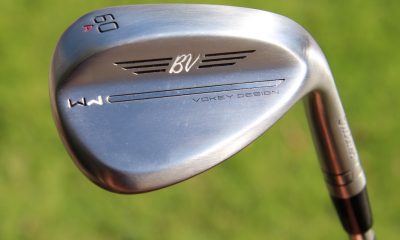

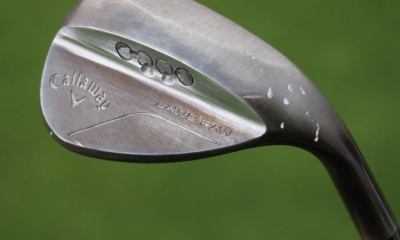

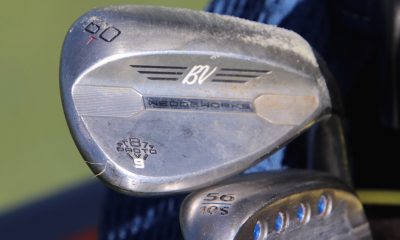

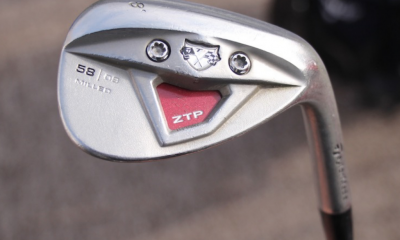

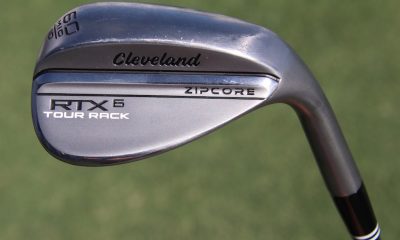

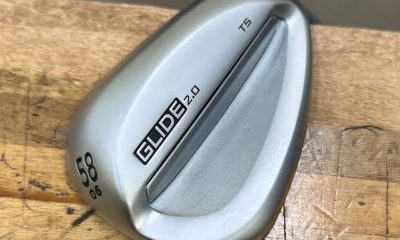
















RG
May 30, 2014 at 9:54 pm
Strike the match, spread the butter.
snowman0157
May 28, 2014 at 5:24 pm
good article, BUT I thought there was a recent study (sorry I cannot recall/name the source) that found for handicap golfers, best chance of getting up/down was by getting as close to the green as possible, rather than laying up to “magic yardage”. Anyone know what I’m talking about?
Club champ
May 28, 2014 at 6:57 pm
Yes. In the book “Every Shot Counts” by Mark Broadie
larrybud
Sep 3, 2013 at 1:42 pm
Pelz’s study on repeatable distance showed that the “9 o’clock” swing, the one where your left arm is essentially parallel to the ground, was the easiest to repeat and most consistent.
My guess is that is most players “magic” distance.
Blakester
Sep 3, 2013 at 12:24 pm
Best way to get average wedge distances with no trackman is to hit 5-6 shots with each position (choke down, choke down 1/2 swing…etc) on an empty fairway and then stand in the center of the landing area and shoot a range finder back to your cart or golf bag. I’ve tried to do this over the last few weeks when I’m playing 9 and time allows. Make sure you write it down!
Billy pun
Sep 3, 2013 at 5:31 am
well said, but not everyone can afford trackman. I tried practices on hitting targets in the range. Using bushnell to make sure i got the exact yardage. However, the quality of the golf ball is……
well, too bad … range balls is the best i can afford
Happyday
Sep 2, 2013 at 6:15 pm
Be great to practice on a launch monitor frequently, especially to dial in prior to tournaments (+2 hndcp). Anyway of working this out without launch monitor, try to practice as much as possible on empty course with range finder.
Lawrie Montague
Sep 2, 2013 at 7:07 pm
It is great information and absolutely essential, but not everyone can afford a Trackman System to practice dialing in their yardages. We come across this question a lot from elite golfers. Check out the Elite Golfer Improvement System at http://www.protourgolfcollege.com for another option for practicing your wedge distance control.